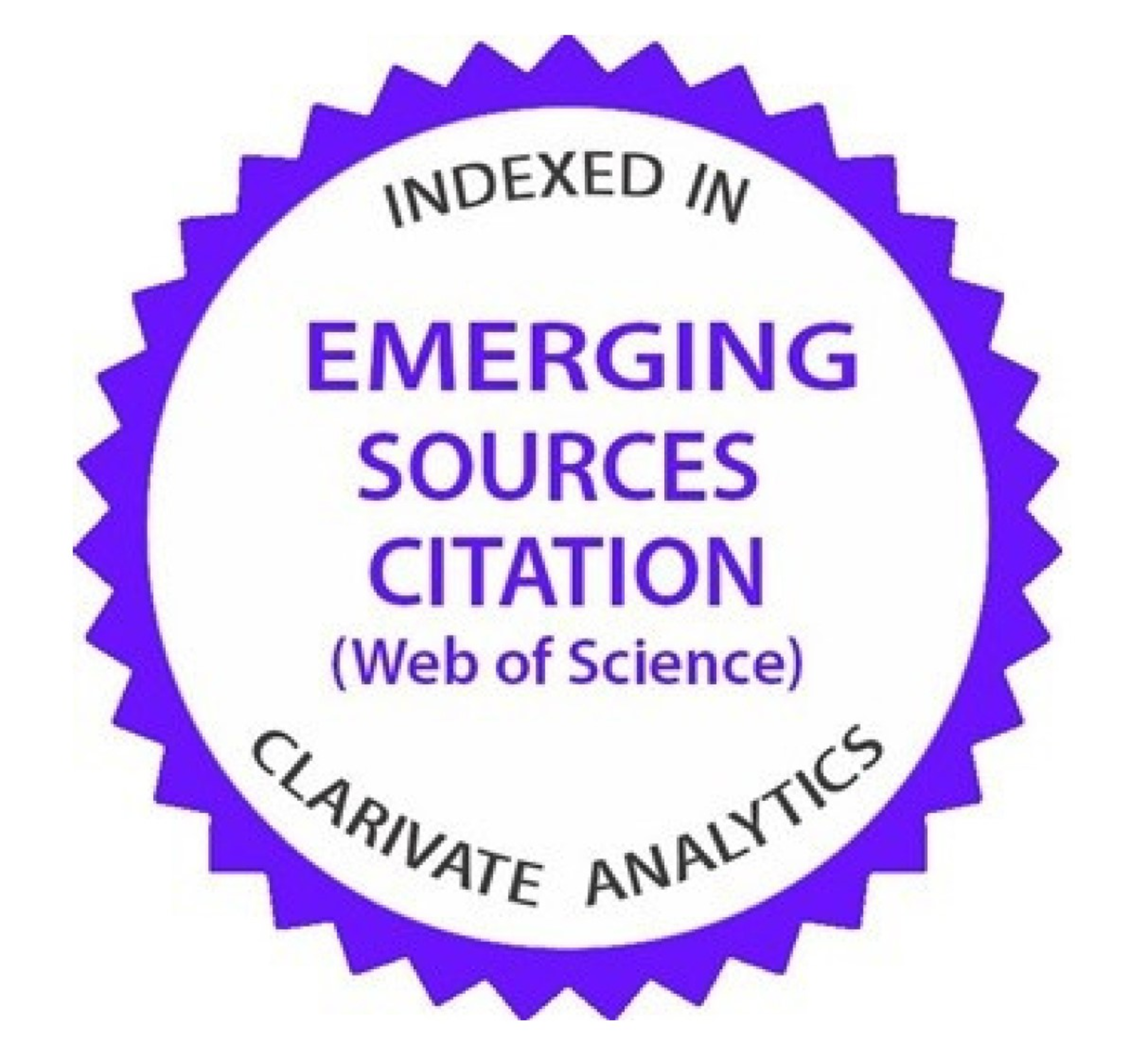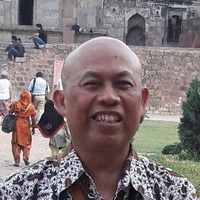Grassroots perspectives of Javanese Muslims on local kyai figures versus Islamic preachers in religious television broadcasts
Downloads
This study examines the views of grassroots Javanese Muslims in Wukirsari, Imogiri, and Yogyakarta toward the authority of local kyai and television preachers (ustadz/ustadzah on the screen). This study aims to analyze how advances in media technology change the pattern of Islamic knowledge transmission and challenge traditional religious authority. Using a critical phenomenological approach, this study examines how media exposure shapes public perception, elevating celebrity preachers through the appeal of popularity while marginalizing traditional kyai rooted in local pesantren and social relations. The findings show that television creates a form of hyperreality that simulates religious legitimacy through visual performance, so the boundaries between ulama based on scientific sanad and media-constructed religious figures become blurred. However, many local kyai demonstrate adaptability to the digital shift without losing their traditional authority or social closeness to the community. The novelty of this study lies in the understanding that the contestation between traditional and modern Islamic authority is not simply a change in the pattern of preaching but also a complex identity struggle in the digital landscape. This study shows that symbolic authority in Islam is increasingly mediated, negotiated, and contested at the grassroots level, influenced by cultural and technological heritage.
Arifin Z (2012) Perkembangan pesantren di Indonesia. Jurnal Pendidikan Agama Islam 9 (1):40-53. https://ejournal.uin-suka.ac.id/tarbiyah/jpai/article/view/3808.
Azra A (2004) The Origins of Islamic Reformism in Southeast Asia: Networks of Malay-Indonesian and Middle Eastern `Ulama’ in the Seventeenth and Eighteenth Centuries. Honolulu: University of Hawaii Press.
Baudrillard J (2017) Simulacra and Simulation. Ann Arbor: University of Michigan Press.
Baudrillard J (2021) The Illusion of the End. Stanford: Stanford University Press.
Beatty A (2009) A Shadow Falls: In the heart of Java. London: Faber & Faber.
Bourdieu P (1991) Language and symbolic power. In: Thompson JB (ed). Raymond G & Adamson M (trans). Cambridge, MA: Harvard University Press.
Campbell H (2010a) When Religion Meets New Media. London: Routledge.
Campbell HA & Tsuria R (2021) Digital Religion: Understanding Religious Practice in Digital Media. New York: Routledge.
Campbell HA (2010b) Religious authority and the blogosphere. Journal of Computer-Mediated Communication 15 (2):251-276. https://doi.org/10.1111/j.1083-6101.2010.01519.x.
Cheong PH (2017) The vitality of new media and religion: Communicative perspectives, practices, and changing authority in spiritual organization. New Media & Society 19 (1):25-33. https://doi.org/10.1177/1461444816649913.
Couldry N & Hepp A (2017) The Mediated Construction of Reality. Cambridge: Polity Press.
Couldry N (2000) The Place of Media Power: Pilgrims and Witnesses of the Media Age. London: Routledge.
Eickelman DF & Anderson JW (ed) (2003) New Media in the Muslim World: The Emerging Public Sphere (2nd ed). Bloomington: Indiana University Press.
Eickelman DF & Piscatori J (1996) Muslim Politics. Princeton, NJ: Princeton University Press.
Eisenlohr P (2011) Media and religious diversity. Annual Review of Anthropology 40: 37-53. https://doi.org/10.1146/annurev-anthro-092611-145823.
Fakhruroji M (2015) Mediatization of religion in “texting culture”: Self-help religion and the shifting of religious authority. Indonesian Journal of Islam and Muslim Societies 5 (2):231-254. https://doi.org/10.18326/ijims.v5i2.231-254.
Fealy G & White S (ed) (2008) Expressing Islam: Religious Life and Politics in Indonesia. Heng Mui Keng Terrace: Institute of Southeast Asian Studies.
Fealy G (2008) Consuming Islam: Commodified religion and aspirational pietism in contemporary Indonesia. In: Fealy G & White S (ed). Expressing Islam: Religious Life and Politics in Indonesia. Heng Mui Keng Terrace: ISEAS Publishing. 15-39. https://doi.org/10.1355/9789812308528-005.
Fikri SA, Muhtadi AS, & Ma’arif BS (2024) Kyai dan komunikasi politik praktis di Pondok Buntet Pesantren Cirebon. Jurnal Perspektif 8 (2):172-187. http://103.55.33.82/index.php/JP/article/view/297
Gao Q, Woods O, Kong L, & Shee SY (2024) Lived religion in a digital age: Technology, affect and the pervasive space-times of ‘new’ religious praxis. Social & Cultural Geography 25 (1):29-48. https://doi.org/10.1080/14649365.2022.2121979
Geertz C (1960) The Religion of Java. Chicago, IL: University of Chicago Press.
Geertz C (1981) The religion of Java. In: Mahasin A (trans). Abangan, Santri, dan Priyayi dalam Masyarakat Jawa. Jakarta: Pustaka Jaya.
Guenther L (2020) Critical phenomenology. 50 concepts for a critical phenomenology 11-16. https://oldcapitolbooks.com/wp-content/uploads/2021/11/critical_phenomenology-lisa-guenther.pdf.
Hall S (1980) Encoding/decoding. In: Hall S, Hobson D, Lowe A, & Willis P (ed). Culture, Media, Language. London: Routledge128-138. https://doi.org/10.4324/9780203381182.
Hallaq WB (2005) The Origins and Evolution of Islamic Law. Cambridge: Cambridge University Press.
Hefner RW (2000) Civil Islam: Muslims and Democratization in Indonesia. Princeton, NJ: Princeton University Press. https://doi.org/10.1515/9781400823871.
Hefner RW (2021) Islam and institutional religious freedom in Indonesia. Religions 12 (6):415. https://doi.org/10.3390/rel12060415.
Hermansyah WG (2022) Pola hubungan patron-klien kyai dan santri dalam pendidikan Islam di Passantren Luhur Malang. Dissertation, Universitas Islam Negeri Maulana Malik Ibrahim, Malang.
Heryanto A (2015) Identity and Pleasure: The Politics of Indonesian Screen Culture. Singapore: NUS Press.
Hidayat Z (2023) Transforming Sufism into digital media. Epistemé: Jurnal Pengembangan Ilmu Keislamman 17 (2):197-223. https://doi.org/10.21274/EPIS.2022.17.2.197-223.
Hirschkind C (2006) The Ethical Soundscape: Cassette Sermons and Islamic Counterpublics. New York: Columbia University Press.
Hoesterey JB (2016) Rebranding Islam: Piety, Prosperity, and a Self-help Guru. Stanford: Stanford University Press.
Hoover SM (2006) Religion in the Media Age. New York: Routledge.
Howell JD (2001) Sufism and the Indonesian Islamic revival. The Journal of Asian Studies 60 (3):701-729. https://doi.org/10.2307/2700107.
Jameson F (2020) Postmodernism, or the Cultural Logic of Late Capitalism. Durham, NC: Duke University Press.
Kholili M, Izudin A, & Hakim ML (2024) Islamic proselytizing in digital religion in Indonesia: The challenges of broadcasting regulation. Cogent Social Sciences 10 (1):2357460. https://doi.org/10.1080/23311886.2024.2357460.
Kuncoro W (2021) Ambivalence, virtual piety, and rebranding: Social media uses among Tablighi Jama’at in Indonesia. CyberOrient 15 (1):206-230. https://doi.org/10.1002/CYO2.12.
Lotz AD (2018) We Now Disrupt this Broadcast: How Cable Transformed Television and the Internet Revolutionized It All. Cambridge, MA: MIT Press.
Lukens-Bull RA (2005) A Peaceful Jihad: Negotiating Identity and Modernity in Muslim Java. New York: Palgrave Macmillan. https://doi.org/10.1057/9781403980298
Ma’arif S (2010) Pola hubungan patron-client kyai dan santri di Pesantren. Ta’dib: Jurnal Pendidikan Islam 15 (02):273-296. https://jurnal.radenfatah.ac.id/index.php/tadib/article/view/76.
Madianou M (2019) Mediatization of Society: A Critical Perspective. Los Angeles: SAGE Publications.
Maulidiyah E (2021) KH Asyhari Marzuqi: Dari pesantren tradisional ke panggung intelektual. Dunia Santri, 2 April. [Accessed 5 Fabruary 2025]. https://www.duniasantri.co/kh-asyhari-marzuqi-dari-pesantren-tradisional-ke-panggung-intelektual/?singlepage=1.
MNC Media (2022) Mau cantik dengan operasi plastik pada wajah? Jawaban Mamah Dedeh bikin kaget! SINDOnews, 23 Juli. [Accessed 25 January 2025]. https://lifestyle.sindonews.com/ead/834645/166/mau-cantik-dengan-operasi-plastik-pada-wajah-jawaban-mamah-dedeh-bikin-kaget-1658552828.
Mustapa L (2017) Pembaruan pendidikan Islam: Studi atas teologi sosial pemikiran KH Ahmad Dahlan. Jurnal Ilmiah AL-Jauhari: Jurnal Studi Islam dan Interdisipliner 2 (1):90-111. https://journal.iaingorontalo.ac.id/index.php/aj/article/view/674.
Nakamura M (2012) The Crescent Arises Over the Banyan Tree: A Study of the Muhammadiyah Movement in a Central Javanese Town, c. 1910-2010. Heng Mui Keng Terrace: Institute of Southeast Asian Studies.
Nasikhin A & Yani MT (2014) Kepemimpinan kyai dan partisipasi politik santri di PP. Al-Ishlah Prambon Tergayang Soko Tuban. Kajian Moral dan Kewarganegaraan 2 (1):93-108. https://ejournal.unesa.ac.id/index.php/jurnal-pendidikan-kewarganegaraa/article/view/6694.
Nisa EF (2018) Social media and the birth of an Islamic social movement: ODOJ (One Day One Juz) in contemporary Indonesia. Indonesia and the Malay World 46 (134):24-43. https://doi.org/10.1080/13639811.2017.1416758
Rahman F (2020) Islam and Modernity: Transformation of an Intellectual Tradition. Chicago: University of Chicago Press. https://ia903207.us.archive.org/2/items/FazlurRahmanIslamandModernity/FazlurRahmanIslamandModernity.pdf.
Ricklefs MC (2014) Rediscovering Islam in Javanese history. Studia Islamika 21 (3):397-418. https://journal.uinjkt.ac.id/index.php/studia-islamika/article/view/1216.
Roiyan A (2023) Perspective Patronase Edward Aspinal dalam proses pemenangan Busyro Karim sebagai bupati dua periode di Kabupaten Sumenep. JRP (Jurnal Review Politik) 13 (2):318-340. https://doi.org/10.15642/jrp.2023.13.2.318-240.
Rosita N (2018) Kepemimpinan kharismatik kyai di Pondok Pesantren Ali Maksum Krapyak Yogyakarta. SANGKéP: Jurnal Kajian Sosial Keagamaan 1 (2):166-183. https://doi.org/10.20414/sangkep.v1i2.620.
Rozaki A (2021) Menabur Karisma, Menuai Kuasa. Yogyakarta: IRCiSoD.
Rusydi BU, Wahyudi W, & Ulfa M (2021) Hubungan patron-klien pada komunitas nelayan dalam kerangka ekonomi Islam. Al-Amwal: Journal of Islamic Economic Law 6 (1):27-44. https://doi.org/10.24256/alw.v6i1.2158.
Salehudin I & Mukhlish BM (2012) Pemasaran halal: Konsep, implikasi dan temuan di lapangan (Halal marketing: Concept, Implication and Field Finding). Dulu mendengar sekarang bicara: Kumpulan tulisan ekonom muda FEUI. Jakarta: Lembaga Penerbit Fakultas Ekonomi UI. 293-305.
Schimmel A (1994) Mystical Dimensions of Islam. Chapel Hill: University of North Carolina Press.
Sebastian A (2019) Komodifikasi Agama Dalam Iklan Analisis Wacana Kritis Sara Mills Terhadap Iklan Biskuit Kokola Versi Mamah Dedeh. Thesis, IAIN Kediri, Kediri.
Slama M (2017) A subtle economy of time: Social media and the transformation of Indonesia’s Islamic preacher economy. Economic Anthropology 4 (1):94-106. https://doi.org/10.1002/sea2.12075.
Susanto ESE (2007) Kepemimpinan [kharismatik] kyai dalam perspektif masyarakat Madura. KARSA Journal of Social and Islamic Culture 30-40. https://doi.org/10.19105/karsa.v11i1.146.
Takdir M (2018) Modernisasi Kurikulum Pesantren. Yogyakarta: IRCiSoD.
Talk Show tvOne RELOAD (2023) Hebat! Ternyata bakat dakwah Ustadz Solmed sudah ada sejak kecil| satu jam lebih dekat tvOne. Talk Show tvOne RELOAD, 14 August. [Accessed 25 January 2025]. https://www.youtube.com/watch?v=G6ev8Egvs1w.
Thussu DK (2018) International Communication: Continuity and Change. London: Bloomsbury Publishing.
Turner V (1969) The Ritual Process: Structure and Anti-Structure. Chicago: Aldine Publishing.
Van Bruinessen M (1994) Pesantren, Kyai, dan Kitab Kuning: Tradisi-tradisi Islam di Indonesia. Jakarta: LP3ES.
Van Bruinessen M (1995) Pesantren and kitab kuning: Maintenance and continuation of a tradition of religious learning. In: Marschall W (ed). Text and Context: The Social Anthropology of Tradition. Münster: LIT Verlag. 121-145.
Wahyono SB (2001) Kejawaan dan keislaman: Satu pertarungan identitas. Jurnal Ilmu Sosial Dan Ilmu Politik 5 (1):41-59. https://journal.ugm.ac.id/jsp/article/view/11107.
Woodward MR (2004) Islam Jawa; Normative Kesalehan Versus Kebatinan. Yogyakarta: LKIS Pelangi Aksara.
Yazid Y, Ardiansyah A, Kholmuminov F, & Rafdeadi R (2023) Reclaiming traditional religious authority in the contemporary era. Journal Dakwah Risalah 34 (1):1-15. https://doi.org/10.24014/jdr.v34i1.21848
Yustati H (2017) Implikasi Strategi Pemasaran Melalui Komodifikasi Agama. Al-Intaj: Jurnal Ekonomi Dan Perbankan Syariah 3 (2):304-323.
Yusuf I (2019) Islamic Scholarship and Authority in the Modern World. London: Bloomsbury. Zaman MQ (2002) The Ulama in Contemporary Islam: Custodians of Change. Princeton: Princeton University Press.
Zaman MQ (2002) The Ulama in Contemporary Islam: Custodians of Change. Princeton: Princeton University Press.

This work is licensed under a Creative Commons Attribution-NonCommercial-ShareAlike 4.0 International License.
Copyright of this journal is possession of Editorial Board and Journal Manager, by the knowledge of the author, while the moral right of the publication belongs to the author.
The formal legal aspect of journal publication accessibility refers to Creative Commons Attribution-NonCommercial-ShareAlike (CC BY-NC-SA), implies that publication can be used for non-commercial purposes in its original form (cannot be modified).
Every publication (printed/electronic) are open access for educational purposes, research, and library. Other than the aims mentioned above, the editorial board is not responsible for copyright violation.
















